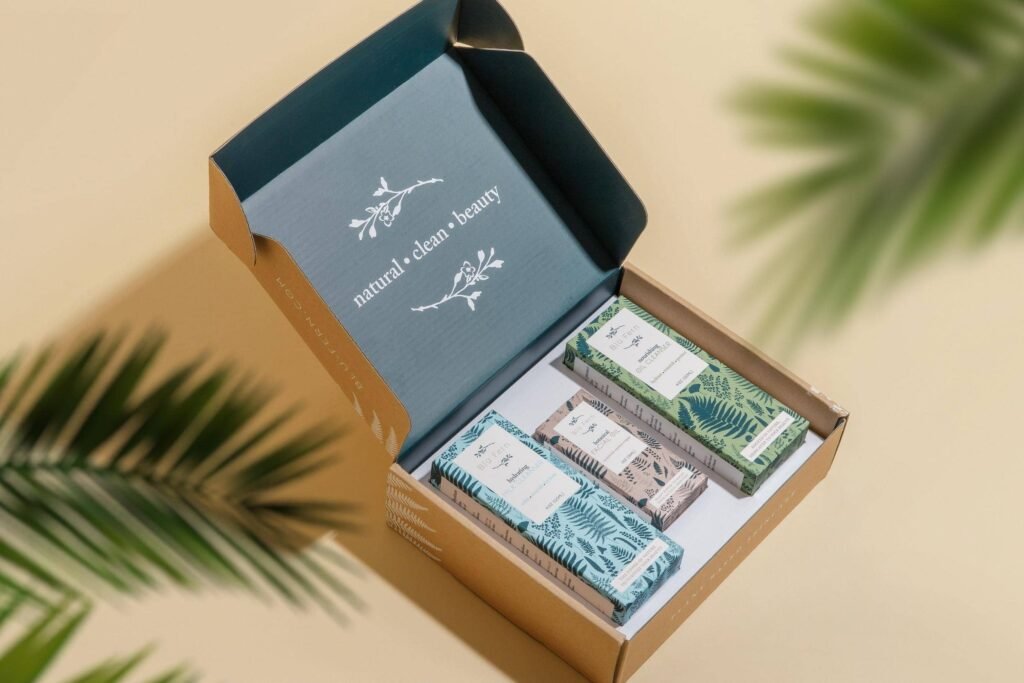
6 Little-Known Secrets to Designing Packaging That Customers Can’t Ignore
Introduction: The Power of Exceptional Packaging
Your packaging is the first impression customers have of your product. It’s not just about protection or branding—it’s an active salesperson that can make or break a sale.
Many brands fail to leverage packaging as a strategic tool, leaving potential revenue on the table. Here are six little-known secrets that can make your packaging impossible to ignore.
1. The Psychology of Color and Shape
Why It Matters
Colors and shapes influence consumer perception and buying behavior. Studies show that people make subconscious judgments about products within 90 seconds, and up to 85% of that decision is based on color alone.
How to Apply It
- Use bold, contrasting colors to grab attention on crowded shelves.
- Match colors with brand personality (e.g., blue for trust, red for urgency, green for eco-friendliness).
- Experiment with unique shapes to create a memorable unboxing experience.
- Avoid generic rectangles when possible; asymmetry or rounded edges can feel more premium.
2. The Rule of Simplicity: Less is More
Why It Matters
Overloaded packaging confuses customers and dilutes your brand message. Clean, minimalist designs feel more premium and allow the key message to shine.
How to Apply It
- Use clean typography and ample white space to guide the eye to essential details.
- Prioritize a single focal point (your logo, a key benefit, or a striking visual element).
- Remove unnecessary text and design elements that don’t add value.
- Ensure quick readability: Customers should understand what your product is within three seconds.
3. Texture and Material Influence Perceived Value
Why It Matters
Touch is a powerful sense. Studies show that premium materials create an emotional connection and increase the perceived value of a product.
How to Apply It
- Matte finishes create a high-end feel compared to glossy packaging.
- 2D textures (like embossing, letterpress) add a tactile, luxury element.
- Soft-touch coatings make packaging feel velvety and upscale.
- Recycled or eco-friendly materials appeal to sustainability-conscious consumers.
4. Storytelling Through Packaging
Why It Matters
People don’t just buy products; they buy stories. Packaging that tells a compelling brand narrative creates a deeper emotional bond with consumers.
How to Apply It
- Use small, engaging details (e.g., hidden messages inside the package or hand-drawn illustrations that reflect your brand story).
- Highlight your brand mission through text or imagery (e.g., a commitment to sustainability or craftsmanship).
- QR codes that link to brand videos or origin stories add a digital storytelling element.
5. Functional Packaging That Enhances Experience
Why It Matters
Good packaging isn’t just about looks; it should enhance the user experience. Packaging that is frustrating to open or use negatively impacts the perception of your product.
How to Apply It
- Easy-open designs (no excessive tape, unnecessary layers, or sharp edges).
- Resealable features to maintain product freshness (great for food or cosmetics).
- Dual-purpose designs that can be repurposed (e.g., jars that double as storage, boxes that transform into display stands).
- Ergonomic considerations for ease of handling.
- Materials matching such as using plastic film labels with products that need to get wet (such as labels for shampoo) or using clear label materials for custom bags with windows.
6. Leveraging Limited Editions & Personalization
Why It Matters
Personalization increases engagement and makes customers feel valued. Limited-edition packaging creates urgency and exclusivity, boosting sales.
How to Apply It
- Limited-run packaging designs for holidays or collaborations to create buzz.
- Customizable elements (e.g., adding a customer’s name or a handwritten note).
- Numbered editions to create a collector’s appeal.
- Personalized packaging for repeat customers (e.g., VIP-only designs or rewards-based customization).
Conclusion: Packaging as a Salesman That Works 24/7
Great packaging doesn’t just hold a product for you until consumption—it sells it to the right people.
By applying these six strategies, you can create packaging that commands attention, elevates perceived value, and fosters brand loyalty.
Whether through smart color choices, storytelling, or interactive elements, your packaging should work just as hard as any marketing campaign to win customers over.
The brands that master these packaging secrets will be the ones that stand out in an increasingly competitive market. Will yours be one of them?




